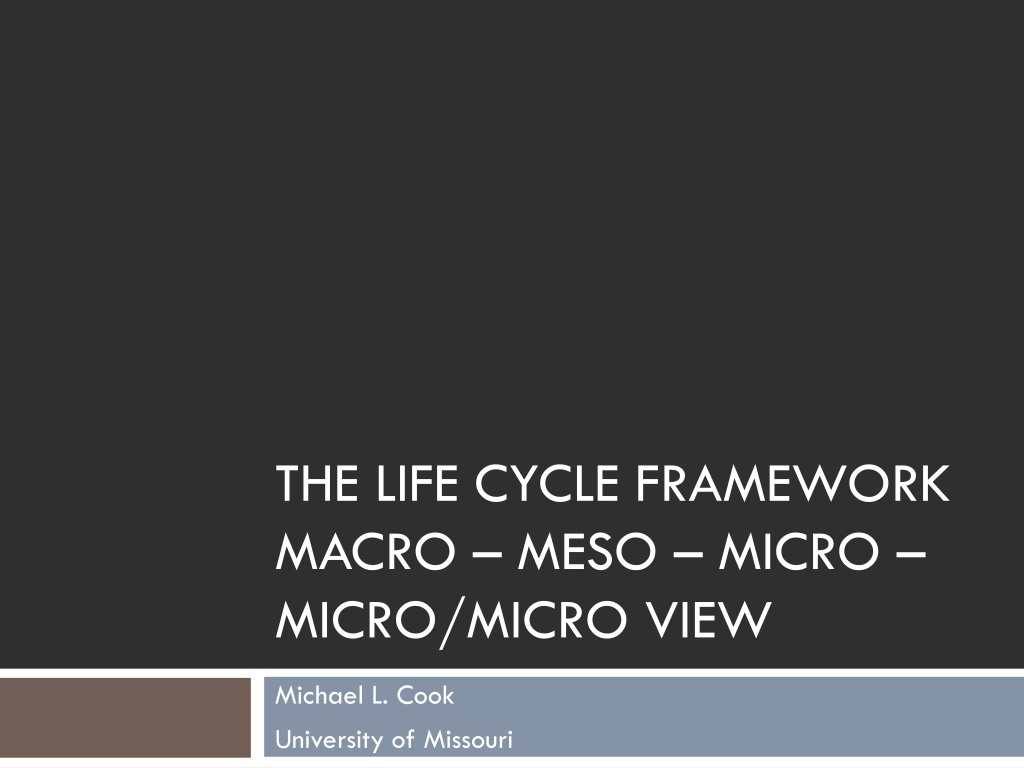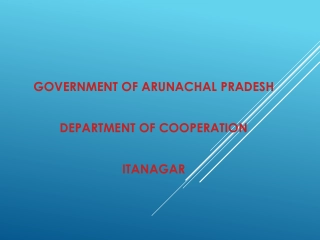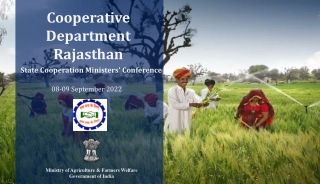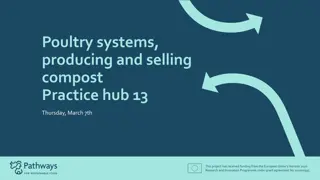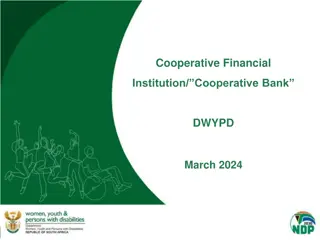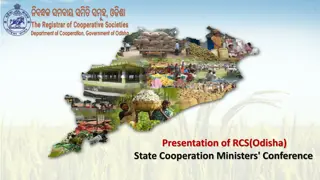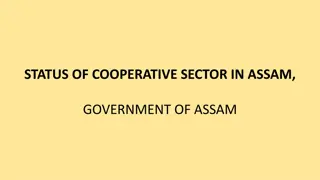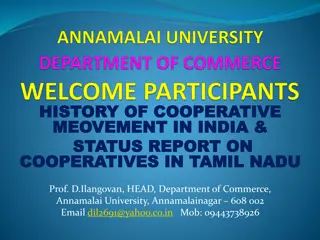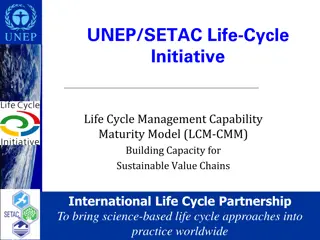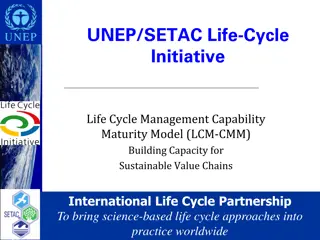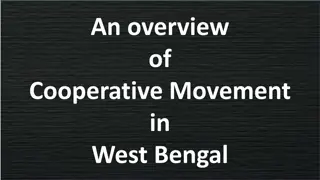Understanding the Life Cycle Framework in Cooperative Management
Explore the stages of the life cycle framework in cooperative management, from macro to micro perspectives. Learn about economic justification, organizational design, growth, and the health of cooperatives over time.
Download Presentation

Please find below an Image/Link to download the presentation.
The content on the website is provided AS IS for your information and personal use only. It may not be sold, licensed, or shared on other websites without obtaining consent from the author. Download presentation by click this link. If you encounter any issues during the download, it is possible that the publisher has removed the file from their server.
E N D
Presentation Transcript
THE LIFE CYCLE FRAMEWORK MACRO MESO MICRO MICRO/MICRO VIEW Michael L. Cook University of Missouri
The Journey A Very Brief Overview of Micro Life Cycle Some Basics A Brief Overview of Micro Cycle (Introduction of Ownership Costs) Evolution of the Framework Finally An Overview of the Micro Life Cycle A Brief Summary of the Life Cycle Framework
A Very Brief Overview The Micro Life Cycle Framework
FOB Health Health of Cooperative Time
FOB Health How do you measure cooperative health? How do you measure performance? Is there a difference?
FOB Lifecycle Health of Cooperative Time
FOB Lifecycle Health of Cooperative P1 Time Phase 1 = Economic Justification
FOB Lifecycle Why formed?
Phase 1: Economic Justification Market failure? Scale economics? Social capital? Multiple rent extraction?
FOB Lifecycle Health of Cooperative P2 Time Phase 2 = Organizational Design
Phase 2: Organizational Design Who can be a member? Who/how is risk capital acquired? Who has residual claim rights? Who has residual control rights? Sanctions - Enforcement
FOB Lifecycle Health of Cooperative P3 Time Phase 3 = Growth Glory Heterogeneity
Phase 3: GrowthGloryHeterogeneity Over time do we observe: Disproportionate equity allocations? 1. Patron drift? 2. Patron-membership growth? 3.
Phase 3: GrowthGloryHeterogeneity Cont. Substitution temptation? 4. Diversification exacerbating differences? 5. Cross subsidization? 6.
FOB Lifecycle Health of Cooperative P4 Time Phase 4 = Recognition and Introspection
Phase 4: Recognition and Introspection Factions? Apathy? Crisis? Identification? Introspection?
FOB Lifecycle Health of Cooperative Tinker Reinvent Spawn Exit P5 Time Phase 5 = Choice
Phase 5: Choices Tinker? Reinvent? Spawn? Exit?
Iterative Life Cycle Hypothesis Health of Cooperative Time
Concepts of Interest Framework Diagnosis Path Dependency Transformation Collective Goods Anti Commons
Ostroms Classification of Collective Goods Samuelson s Classification (1954) One Person s Consumption Subtracts from Total Available to Others Musgrave s Classification (1959) One Person s Consumption Does Not Subtract from Total Available to Others (Jointness of Consumption) Club Goods (toll goods) Public Goods Exclusion is Feasible Private Goods Exclusion in Not Feasible Common Pool Resources Ostrom, Elinor (2003) How Types of Goods and Property Rights Jointly Affect Collective Action , Journal of Theoretical Politics 15(3): 239-270
Important Differences / Similarities Starting vs. Maintaining Marketing vs. Supply vs. Service Multipurpose vs. Single Purpose Spatial (Local Regional National) Patron Controlled (PCB) Farmer Owned Business (FOB) Producer Owned Business (POB) Cooperative (Patron Owned and Controlled)
Framework Extension of the Farm? A Separate Firm?
Cooperative Health Financial Non-Cooperative Financial, but H.H. Financial Leaders Perception Community Social Capital
Cooperative Health (Recent Survey) Financial Return on Equity Return on Investment minus Member Opportunity Cost of Capital Return on Assets Non-Financial (Reduced from Industry) Competitive Position in Industry Overall Profitability (cooperative to member) Member Satisfaction Ability to Achieve Vision Overall Performance
Graduate Institute of Cooperative Leadership (GICL) Graduate Institute of Cooperative Leadership (GICL) A Collaborative Research / Outreach Experience A Collaborative Research / Outreach Experience
Life Cycle Typology Macro Micro/Micro Meso Micro Micro Meso Micro/Micro Macro Links Human Dimension Organizational Dimension Enabling Environment
Life Cycle Typology Macro All famer owned business Macro Forces Political, Social, Institutional To Inform Implications of Institutional Change Inform Policy Meso Group of Farmer Owned Entities (Type or Industry) Shared Characteristics of Interest To Inform Comparable Sample (Evolution, Functions, Structure, Policy Reactions) Detect Generalizable Threats Analyze Integrated System Inform Policy
Life Cycle Typology Micro Single Entity Constitutional Governance Operational Strategy Detect Heterogeneity Vaguely Defined Property Rights Detect Ownership Cost Evasion Inform Policy Micro/Micro Individual Member (Household) Demographics / Patron Characteristics Organization Related Preferences Detect Loyalty and Leadership Attributes Related to Collective Action Inform Policies
